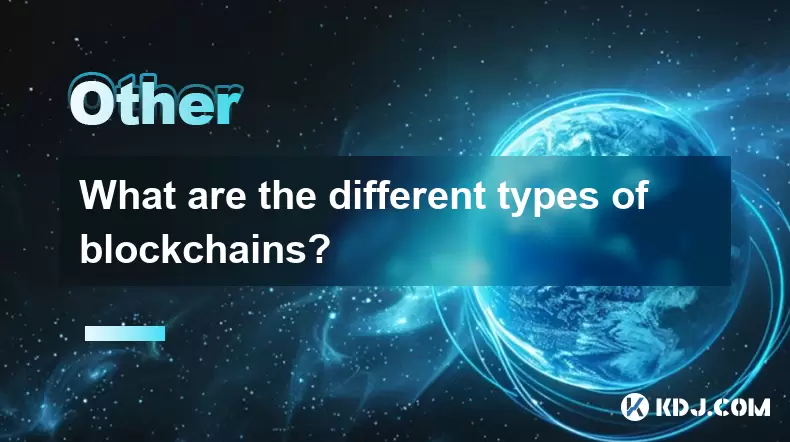-
 Bitcoin
Bitcoin $112400
-1.07% -
 Ethereum
Ethereum $3409
-3.27% -
 XRP
XRP $2.784
-6.60% -
 Tether USDt
Tether USDt $0.9997
-0.03% -
 BNB
BNB $739.3
-2.09% -
 Solana
Solana $158.0
-2.90% -
 USDC
USDC $0.9998
-0.02% -
 TRON
TRON $0.3213
-0.94% -
 Dogecoin
Dogecoin $0.1929
-5.01% -
 Cardano
Cardano $0.6974
-2.82% -
 Hyperliquid
Hyperliquid $36.69
-2.31% -
 Sui
Sui $3.327
-4.80% -
 Stellar
Stellar $0.3672
-5.18% -
 Chainlink
Chainlink $15.65
-3.07% -
 Bitcoin Cash
Bitcoin Cash $525.0
-1.68% -
 Hedera
Hedera $0.2291
-6.00% -
 Avalanche
Avalanche $20.91
-2.96% -
 Ethena USDe
Ethena USDe $1.000
0.00% -
 Toncoin
Toncoin $3.520
-1.12% -
 UNUS SED LEO
UNUS SED LEO $8.968
0.14% -
 Litecoin
Litecoin $105.7
0.26% -
 Shiba Inu
Shiba Inu $0.00001181
-1.79% -
 Polkadot
Polkadot $3.492
-2.08% -
 Uniswap
Uniswap $8.800
-3.10% -
 Dai
Dai $0.9999
-0.01% -
 Monero
Monero $289.9
-3.17% -
 Bitget Token
Bitget Token $4.243
-1.27% -
 Pepe
Pepe $0.00001006
-3.67% -
 Cronos
Cronos $0.1248
-5.68% -
 Aave
Aave $249.7
-2.50%
Does the ranking of Chinese blockchain apps include enterprise-level applications?
Enterprise-level blockchain apps, like AntChain and JD Blockchain, are included in Chinese rankings, often evaluated on business impact and adoption by large corporations.
Apr 15, 2025 at 06:42 am

The ranking of Chinese blockchain apps often includes a variety of applications, ranging from consumer-focused to enterprise-level solutions. Understanding the scope and criteria for these rankings is essential to determine if enterprise-level applications are included. This article delves into the specifics of how Chinese blockchain app rankings are compiled, the criteria used, and whether enterprise-level applications are considered within these rankings.
Criteria for Ranking Chinese Blockchain Apps
The criteria used to rank Chinese blockchain apps can vary depending on the organization or platform conducting the ranking. Common metrics include user base size, transaction volume, technological innovation, and market impact. Some rankings might focus more on consumer applications, while others might give weight to enterprise solutions. For instance, platforms like ChainDD and CoinGecko provide comprehensive rankings that often include both consumer and enterprise applications.
Inclusion of Enterprise-Level Applications
Enterprise-level blockchain applications are indeed included in many Chinese blockchain app rankings. These applications are designed to solve complex business problems, such as supply chain management, financial services, and data integrity. Rankings that consider enterprise applications often evaluate them based on their ability to address these specific business needs. For example, a blockchain solution for supply chain management might be ranked based on its adoption rate among large corporations, the efficiency it brings to the supply chain, and its scalability.
Examples of Enterprise-Level Blockchain Apps in Rankings
Several notable enterprise-level blockchain applications have made it into Chinese blockchain app rankings. One such example is AntChain, developed by Ant Group, which offers solutions for various industries including finance, logistics, and healthcare. AntChain's inclusion in rankings showcases its impact on enterprise-level blockchain adoption in China. Another example is JD.com's JD Blockchain, which focuses on supply chain and product traceability. These applications are often ranked alongside consumer apps, highlighting the diversity of blockchain use cases in the Chinese market.
How Rankings Are Compiled
The process of compiling rankings for Chinese blockchain apps involves several steps. Data collection is the first step, where information about the app's user base, transaction volume, and technological features is gathered. This data is often sourced from the apps themselves, third-party analytics platforms, and market research reports. Next, the data is analyzed and scored according to the predefined criteria. The final step involves ranking the apps based on their scores, with adjustments made for any specific weighting given to certain metrics.
Impact of Enterprise-Level Applications on Rankings
The inclusion of enterprise-level applications can significantly impact the overall rankings of Chinese blockchain apps. These applications often have a different set of metrics compared to consumer apps. For instance, while a consumer app might be ranked highly for its user base size, an enterprise app might be ranked for its ability to streamline business processes or enhance security. This diversity in metrics means that enterprise-level applications can sometimes outperform consumer apps in certain rankings, depending on the criteria used.
Challenges in Ranking Enterprise-Level Applications
Ranking enterprise-level blockchain applications comes with its own set of challenges. One major challenge is the lack of standardized metrics for enterprise solutions. Unlike consumer apps, where user engagement and transaction volume can be easily measured, enterprise applications might focus on more nuanced metrics like cost savings, efficiency improvements, and compliance with regulatory standards. Another challenge is the proprietary nature of enterprise data, which can make it difficult to gather accurate and comprehensive information for ranking purposes.
Case Studies of Enterprise-Level Blockchain Apps
To better understand how enterprise-level blockchain apps are ranked, let's look at a few case studies. The first case study involves VeChain, a blockchain platform that focuses on supply chain management and product authenticity. VeChain's ranking often reflects its adoption by major corporations like Walmart China and BMW, showcasing its impact on enterprise-level blockchain applications. Another case study is HyperLedger, an open-source blockchain platform used by various enterprises for developing their own blockchain solutions. HyperLedger's ranking often highlights its technological innovation and its wide adoption across different industries.
How to Access and Interpret Rankings
Accessing and interpreting rankings of Chinese blockchain apps, including those with enterprise-level applications, can be done through several steps:
- Identify the Ranking Platform: Choose a reputable platform like ChainDD, CoinGecko, or specialized reports from market research firms.
- Understand the Criteria: Review the criteria used for the ranking to understand what metrics are considered and how they are weighted.
- Analyze the Data: Look at the data provided for each app, paying attention to both consumer and enterprise metrics.
- Compare Across Categories: Compare apps within the same category (consumer vs. enterprise) to get a clearer picture of their performance.
- Consider the Context: Keep in mind the broader market context and any recent developments that might affect the rankings.
Frequently Asked Questions
Q: How do enterprise-level blockchain apps differ from consumer apps in terms of ranking criteria?
A: Enterprise-level blockchain apps are often evaluated based on their ability to solve specific business problems, such as improving supply chain efficiency or enhancing data security. In contrast, consumer apps are typically ranked based on user engagement, transaction volume, and market penetration. The criteria for enterprise apps might include metrics like cost savings, regulatory compliance, and adoption by large corporations.
Q: Can enterprise-level blockchain apps be ranked higher than consumer apps in Chinese rankings?
A: Yes, enterprise-level blockchain apps can be ranked higher than consumer apps depending on the criteria used. If the ranking emphasizes metrics like technological innovation, business impact, and adoption by large enterprises, then enterprise apps might outperform consumer apps.
Q: Are there any specific platforms that focus on ranking enterprise-level blockchain applications in China?
A: While many platforms like ChainDD and CoinGecko include both consumer and enterprise apps in their rankings, some specialized reports and market research firms might focus more on enterprise-level solutions. For instance, reports from firms like Deloitte and PwC often provide detailed analyses of enterprise blockchain applications.
Q: How can businesses use these rankings to make decisions about adopting blockchain technology?
A: Businesses can use these rankings to identify leading blockchain solutions that have proven effective in solving similar business problems. By analyzing the rankings, businesses can gain insights into the adoption rates, technological capabilities, and market impact of different blockchain apps, helping them make informed decisions about which solutions to adopt.
Disclaimer:info@kdj.com
The information provided is not trading advice. kdj.com does not assume any responsibility for any investments made based on the information provided in this article. Cryptocurrencies are highly volatile and it is highly recommended that you invest with caution after thorough research!
If you believe that the content used on this website infringes your copyright, please contact us immediately (info@kdj.com) and we will delete it promptly.
- BlockDAG, SEI, Ethena: Top Crypto Performers Under the Microscope
- 2025-08-03 10:50:16
- Bitcoin Blasts Past $119K: How Institutional Adoption and Macro Shifts Fuel the Fire
- 2025-08-03 10:55:16
- Crypto, Grok, and August: Decoding the Latest Trends and Insights
- 2025-08-03 11:10:16
- Crypto, Phishing, and Your Wallet: A New Yorker's Guide to Staying Safe
- 2025-08-03 10:30:16
- Troller Cat Meme Coin Presale Soars: A New King in the Crypto Jungle?
- 2025-08-03 10:30:16
- Grayscale, Altcoin Trust, and Mid-Cap Mania: What's the Deal?
- 2025-08-03 08:50:16
Related knowledge

What is the difference between on-chain and off-chain transactions?
Aug 02,2025 at 04:22pm
Understanding On-Chain TransactionsOn-chain transactions refer to digital asset transfers that are recorded directly on a blockchain ledger. These tra...

What is the double-spending problem and how does blockchain prevent it?
Aug 02,2025 at 01:07pm
Understanding the Double-Spending ProblemThe double-spending problem is a fundamental challenge in digital currency systems where the same digital tok...

What is the difference between a blockchain and a database?
Aug 01,2025 at 09:36pm
Understanding the Core Structure of a BlockchainA blockchain is a decentralized digital ledger that records data in a series of immutable blocks linke...

How does blockchain handle scalability?
Aug 02,2025 at 02:58pm
Understanding Blockchain Scalability ChallengesBlockchain scalability refers to a network's ability to handle an increasing volume of transactions wit...

What are the different types of blockchains?
Aug 03,2025 at 03:01am
Public Blockchains: Open and Decentralized NetworksPublic blockchains are the most widely recognized type of blockchain, characterized by their open a...

What is a hash in a blockchain?
Aug 02,2025 at 05:28am
Understanding the Concept of Hash in BlockchainA hash in the context of blockchain technology refers to a unique digital fingerprint generated by a cr...

What is the difference between on-chain and off-chain transactions?
Aug 02,2025 at 04:22pm
Understanding On-Chain TransactionsOn-chain transactions refer to digital asset transfers that are recorded directly on a blockchain ledger. These tra...

What is the double-spending problem and how does blockchain prevent it?
Aug 02,2025 at 01:07pm
Understanding the Double-Spending ProblemThe double-spending problem is a fundamental challenge in digital currency systems where the same digital tok...

What is the difference between a blockchain and a database?
Aug 01,2025 at 09:36pm
Understanding the Core Structure of a BlockchainA blockchain is a decentralized digital ledger that records data in a series of immutable blocks linke...

How does blockchain handle scalability?
Aug 02,2025 at 02:58pm
Understanding Blockchain Scalability ChallengesBlockchain scalability refers to a network's ability to handle an increasing volume of transactions wit...

What are the different types of blockchains?
Aug 03,2025 at 03:01am
Public Blockchains: Open and Decentralized NetworksPublic blockchains are the most widely recognized type of blockchain, characterized by their open a...

What is a hash in a blockchain?
Aug 02,2025 at 05:28am
Understanding the Concept of Hash in BlockchainA hash in the context of blockchain technology refers to a unique digital fingerprint generated by a cr...
See all articles

























































































